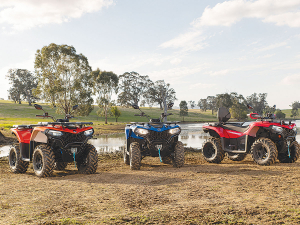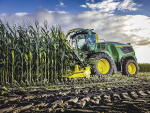While Chinese motor vehicle brands are becoming more commonplace on the roads of New Zealand, the same can’t be said about Chinese quad bike and side-by- sides on farms.
These can struggle to beat the stranglehold of the big Japanese brands. However, one brand seems to be making headway. CF Moto was only established in 1989, before moving into quads and side-by-sides in 2005. The company now generates revenues of US$1.2bn from sales in over 100 countries via 3,000-plus dealers.
CF Moto is based in Hangzhou China with more than 4,500 employees. It claims the number one position in more than 17 countries including Italy, Spain, Sweden and Germany.
Introduced into NZ in 2014, the late entrant has been making progress. The half-year result for Jan-June 2022 suggests the company now has a market share of around 14%, delivered by 30 dealers that cover around 65% of the country.
One would expect this number to rise with the newly released C Force 400 and 520 models. These proved popular in a previous incarnation selling over 160,000 units globally. Offered in CF400 Basic, CF400 EPS and 520 EPS variants, the new models typically arrive on farm at half the price of their high-end Japanese rivals.
Featuring new aggressive styling, said to be bigger and bolder, the machines feature 260mm ground clearance and a turning circle, at 5.2 metres. This is 25% reduced over previous models. The machine also offer a 26% increase in suspension travel to give more rider comfort. Other design detail sees the air intake raised by 120mm to a position under the speedo housing.
On the chassis side, specifically ‘sculpted’ A-arm assemblies help avoid impact with rocks or foreign objects. Meanwhile, the brakes and CV joints are protected by dedicated shields. The machines are also said to be more versatile over rough terrain, thanks to increased approach and departure angles.
In the engine department, both machines use a single cylinder, Bosch fuel-injected engine. This puts out 31 and 34hp, by the 400 and 520 respectively.
Much of the redesign is centred around airflow in the engine area, with airflows achieved through new high-level intakes on each side of the machine, through integral ducting, beneath close-fitting side panels. The layout is said to make the machines much more comfortable to operate, by eliminating the traditional roasting of a leg as the exhaust generates heat.
Other detail includes a narrower fuel tank with a capacity increase to 17 litres. There is around 40% more foam padding in the seat squabs and a new, more durable rubberised outer seat cover.
In addition, all key electrical components have been moved to a position high under the front cover, while the battery is mounted in a clever sling to make it easier to lift out of its housing.
The CVT transmission is configured to offer High/Low/Neutral/ Reverse and Park positions. There is an additional park lock on the brake lever, which is said to be preferable when the vehicle is parked on slopes – meaning the Park lever is more difficult to release.
Weighing in at 332 and 351kg, both the 400 and 520 models offer a 612kg towing capacity.
The machines come with 30kg and 60kg capacities on the front and rear racks.
Wheel equipment sees 24-inch, 6-ply tyres mounted on 12-inch wheels. Changing ground conditions are taken care of by 2WD/4WD and locking front differential functions.
Standard equipment includes rego kit that features indicators, lights, horn, mirrors and daytime running lights. In addition, a trailer plug, power socket, USB plug and front winch are included. The 520 comes with hand guards, while both models are covered by a 2-year warranty.
Tough Country
CF Moto studies have confirmed that conditions and typical use in NZ is much harder than other countries.
For example, in its largest market of North America, where a total of 650,000 units sold in 2021, usage is typically 10 hours per annum at an average speed of 20km/h. By contrast, usage in Australia is around 250 hours per annum, with an average speed of 10km/h.
However, in NZ usage climbs to 450 hours each year at an average speed of 25km/h – with very little attention paid to servicing.



















